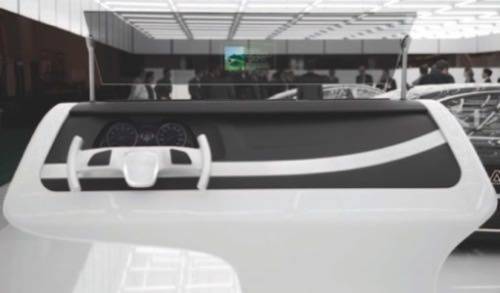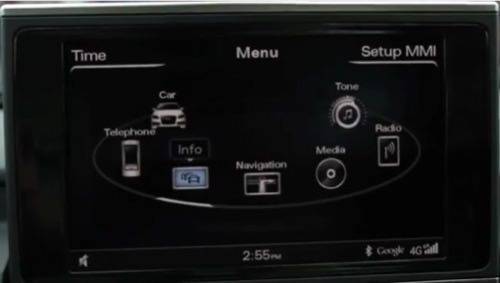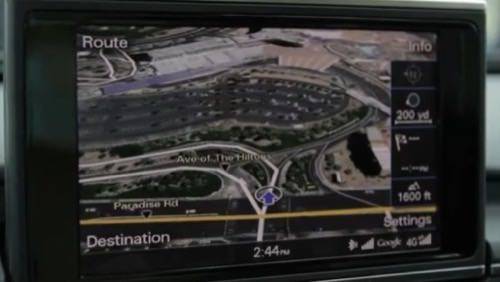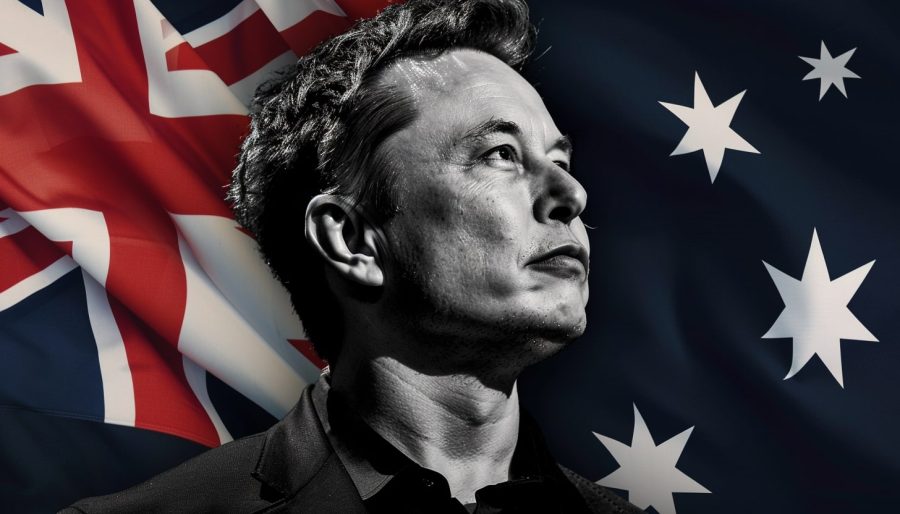

So far in our series on car connectivity, we’ve focused on infotainment systems. It’s early in the evolution of Internet services in vehicles and up till now, it’s been all about information and entertainment. Early in-car apps have focused on music, navigation and news. The next generation of in-car apps will be about providing “smart” services, such as taking some of the cognitive load off the driver – including making the car autonomous in some ways.
At CES in January, Audi showed off futuristic concepts like the gestural-based dashboard above. At SXSW in March, I sat down with Anupam Malhotra, Manager of Connected Vehicles at Audi of America, to talk more about the future of Audi’s connected services.
Audi’s infotainment system is called Audi Connect. It basically turns the car into a mobile Wi-Fi hotspot, allowing the driver to use Google Maps on the dashboard and passengers to connect to apps from their smartphones or tablets.

The Wi-Fi comes from a T-Mobile cellphone modem inside the car. Although Audi’s Internet connection is limited to 3G speeds right now, at CES Malhotra showed a test A7 car that used a significantly faster 4G LTE connection. This will likely be pushed into production sometime in 2013.
Context Relevant Location-based Services
Anupam Malhotra is a veteran of car infotainment systems, having started at GM’s OnStar subsidiary in 2000. Since moving to Audi in July 2010, he has been responsible for the Audi Connect infotainment system in the U.S., together with overseeing the connected-vehicle strategy for that market.
The current stage of car technology is providing what Malhotra calls “context relevant location-based services.” Audi has done research on what drivers want and it’s services such as real-time news and weather, gas station locations, POIs (Points Of Interest), traffic information and travel destinations.
The Future of Audi Connectivity
One area where in-car technology will evolve is navigation; in particular how the car can automate some navigation aspects. Malhotra told me that Audi is currently figuring out “what the vehicle’s role is as the navigator.” Right now this is done via Google voice controls. For example if you’re looking for a spicy chicken lunch, you can tell the system “spicy chicken” and it will inform you of the nearest eatery where spicy chicken is available.
Another area that Audi is targeting is the HMI (Human-machine interface) in the car. The first generation was buttons around the driving wheel and touchscreen controls in the dashboard. Voice controls came next, with the Google voice system being the latest iteration of that for Audi. In the near future we will see gesture controlled systems, which Audi demonstrated at CES as a concept. Gesture controls will be used not just by the driver, but passengers in the car.
The software in the vehicle will also evolve, said Malhotra, to take away some of the decision-making from the driver. Not so much in terms of driving, which people want to keep control over. It will be focused on things that augment the driving experience. Features such as lane departure sensing, warning systems if there is a car in your blind spot, technology that protects the car occupants in the event of a collision. “All of this will happen through connectivity,” said Malhotra.

The overall goal of these future-looking developments, Malhotra said, is to take away the “misery” aspects of driving; like parking problems, dealing with traffic congestion, fuel management. This will allow the driver to enjoy the actual driving part.
Malhotra expects to see advanced services in the near future, such as a predictive app that calculates your route on-the-fly based on your daily habits, car requirements (for example, needing to fill up with gas or re-charge electricity), real-time traffic and road conditions.
Ultimately car connectivity will enable cars to talk to each other, plus objects in the environment such as traffic lights. In what Malhotra termed a “super connected world,” cars will essentially mesh with the environment.










